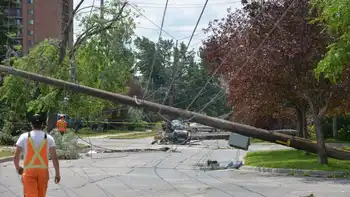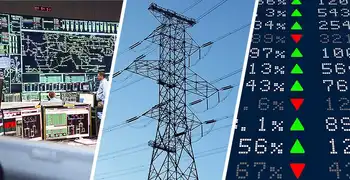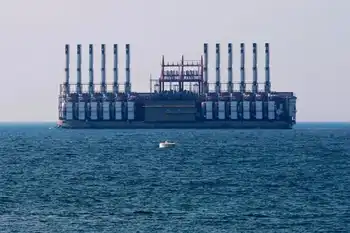FirstEnergy cites software problems in blackout
- FirstEnergy Corp. , the Ohio energy company at the center of an interim federal report on the giant Aug. 14 blackout, recently cited faulty computer software as a key factor in cascading problems that led up to the massive outage.
Company spokesman Ralph DiNicola said the software problem "caused a malfunction in the FirstEnergy alarm system. The problem meant a great deal of information was not available to (our) system controllers."
The power blackout last August that eventually left 50 million people in the dark began when overgrown trees shorted out three major transmission lines owned by FirstEnergy, U.S. and Canadian investigators said recently.
The investigators said in the report that in addition to failing to keep trees trimmed, FirstEnergy is largely to blame for the Aug. 14 outage because it did not have adequate alarms or computer equipment to flag the growing drain on its grid.
FirstEnergy earlier acknowledged it had problems Aug. 14 with its control room alarm system and computers.
DiNicola said an analysis of the company's computers, which it has shared with investigators, uncovered a software flaw that kept the company unaware of the growing trouble.
Looking beyond the blackout, DiNicola said the final government report "will have to address broader system issues."
Among the key problems that surfaced after the blackout are reactive power, needed to stabilize energy flowing on high-voltage lines, and problems sending power to customers ever farther distances across the grid, DiNicola said.
The growing role of independent merchant power plants connected to a power grid once used exclusively by regulated utilities also needs attention, he said. "These are the kinds of issues that affected (FirstEnergy's) system and if they are not addressed in the long term, the task force will be unsuccessful in its goal of minimizing the chance of a recurrence," he added.
ECHOED PUBLIC CONCERNS
Top Midwest energy regulators joined a chorus of officials citing the report as evidence the power grid must be governed by mandatory and enforceable standards to ensure reliable operations rather than left to voluntary industry efforts.
"For the future, there needs to be mandatory reliability standards with the Federal Energy Regulatory Commission serving as the overseer of the transmission grid," said J. Peter Lark, chairman of the Michigan Public Service Commission.
There must be penalties if the rules are not followed, Lark added.
The Michigan commission, in a scathing Nov. 5 report, laid much of the blame for the blackout on problems on the Ohio grid.
Lark said he was "gratified" the federal task force corroborated the report. Alan Schriber, chairman of the Public Utilities Commission of Ohio, said the agency is prepared to order FirstEnergy to file a plan to upgrade computer hardware and software systems at its control centers.
"The next phase of this investigation will speak to system reforms intended to preclude future blackouts," Schriber said.
Related News

Sub-Saharan Africa has a huge electricity problem - but with challenge comes opportunity
PORTO NOVO - Sub-Saharan Africa has an electricity problem. While the world as a whole has made great strides when it comes to providing access to electricity (the world average is now 90 per cent with access, up from 83 per cent in 2010), southern and western African states still lag far behind.
According to Tracking SDG7: The Energy Progress Report, produced by a consortium of organisations including the World Bank, the International Energy Agency and the World Health Organization, 759 million people were without electricity in 2019 and threequarters of them were based in sub-Saharan Africa. At just seven per…




